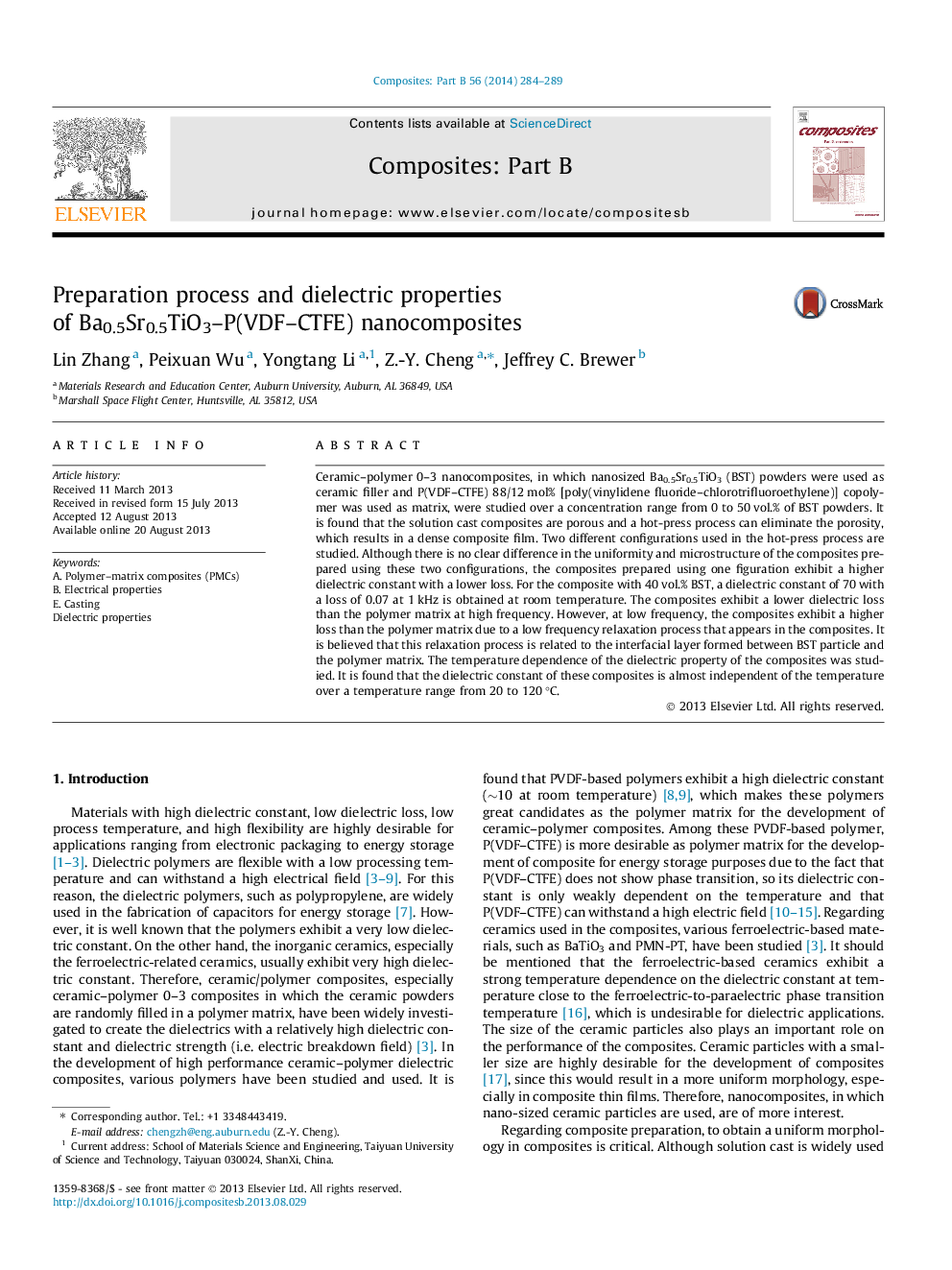| Article ID | Journal | Published Year | Pages | File Type |
|---|---|---|---|---|
| 817936 | Composites Part B: Engineering | 2014 | 6 Pages |
Ceramic–polymer 0–3 nanocomposites, in which nanosized Ba0.5Sr0.5TiO3 (BST) powders were used as ceramic filler and P(VDF–CTFE) 88/12 mol% [poly(vinylidene fluoride–chlorotrifluoroethylene)] copolymer was used as matrix, were studied over a concentration range from 0 to 50 vol.% of BST powders. It is found that the solution cast composites are porous and a hot-press process can eliminate the porosity, which results in a dense composite film. Two different configurations used in the hot-press process are studied. Although there is no clear difference in the uniformity and microstructure of the composites prepared using these two configurations, the composites prepared using one figuration exhibit a higher dielectric constant with a lower loss. For the composite with 40 vol.% BST, a dielectric constant of 70 with a loss of 0.07 at 1 kHz is obtained at room temperature. The composites exhibit a lower dielectric loss than the polymer matrix at high frequency. However, at low frequency, the composites exhibit a higher loss than the polymer matrix due to a low frequency relaxation process that appears in the composites. It is believed that this relaxation process is related to the interfacial layer formed between BST particle and the polymer matrix. The temperature dependence of the dielectric property of the composites was studied. It is found that the dielectric constant of these composites is almost independent of the temperature over a temperature range from 20 to 120 °C.
